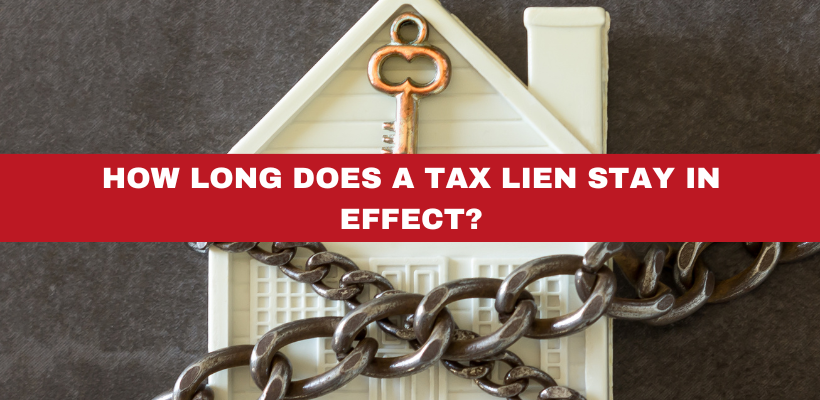If you’ve received a Notice of Federal Tax Lien, you’re probably wondering how long it will last. A tax lien from the IRS can have a big impact on your financial situation, especially when it’s tied to your property. So, let’s break down the basics of how long a tax lien stays in effect, and what it means for you.
What is a tax lien?
A tax lien is the IRS’s legal claim against your property because of unpaid taxes. When you don’t pay your taxes, the IRS files a lien to secure the amount you owe. The lien gives the IRS a right to your property, making it harder to sell, refinance, or borrow against it until the debt is settled.
Think of it as the IRS “marking its territory” on your property to ensure they get paid if you try to sell or refinance. But don’t worry, the lien doesn’t automatically mean the IRS will take your property. It’s more of a warning and a way to hold your assets in place.
How long does the lien stay in effect?
Once the IRS files a tax lien, it stays on your property for up to 10 years. This period is known as the statute of limitations for the IRS to collect the tax debt. That means the lien could remain on your property for the full 10 years, even if you’re making payments, unless you do something to resolve the debt.
Here’s a timeline:
- The IRS has 10 years from the date the taxes are assessed to collect the money you owe.
- During this period, the lien remains attached to your property, which means the IRS can seize your assets or make it difficult to sell or refinance your property.
What happens to the lien after 10 years?
Once the 10 years are up, the IRS can no longer collect the tax debt, and the lien expires. The statute of limitations means that the IRS cannot extend the lien beyond this time unless you take certain actions, like agreeing to extend the collection period or filing for bankruptcy.
However, it’s important to know that if you don’t pay the debt before the 10-year period is over, the IRS might still take steps to collect, like levying your bank account or wages, or going after other assets. The 10-year limit applies only to the time they can actively collect the debt.
How do I know when the lien is released?
After you pay off your tax debt, the IRS is required to release the lien within 30 days. You’ll receive a Certificate of Release of Federal Tax Lien, which proves that the lien has been removed from your property. Make sure to keep this document as proof that the lien is no longer active.
If the lien remains on your property after the 10 years and you’ve paid off your debt, contact the IRS to request a release of the lien. Sometimes, even if you’ve paid, the IRS may fail to update the lien status, and you’ll need to follow up.
Final Thoughts
A tax lien can stay on your property for up to 10 years, but it doesn’t mean the IRS can automatically seize your property. You have options to resolve the lien before the 10 years are up, either by paying the debt, negotiating a settlement, or working out an arrangement with the IRS.
If you find yourself with a lien on your property, it’s important to act quickly to either pay the debt or work with the IRS to resolve the situation. The longer the lien stays in place, the harder it can be to move forward financially.







 Steven N. Klitzner, P.A. is a tax attorney based in Miami, Florida. He has been practicing tax law for over 40 years, and currently holds a 10.0 rating by Avvo. Mr. Klitzner was appointed to the IRS Service Advisory Council in 2021 and is...
Steven N. Klitzner, P.A. is a tax attorney based in Miami, Florida. He has been practicing tax law for over 40 years, and currently holds a 10.0 rating by Avvo. Mr. Klitzner was appointed to the IRS Service Advisory Council in 2021 and is... 





